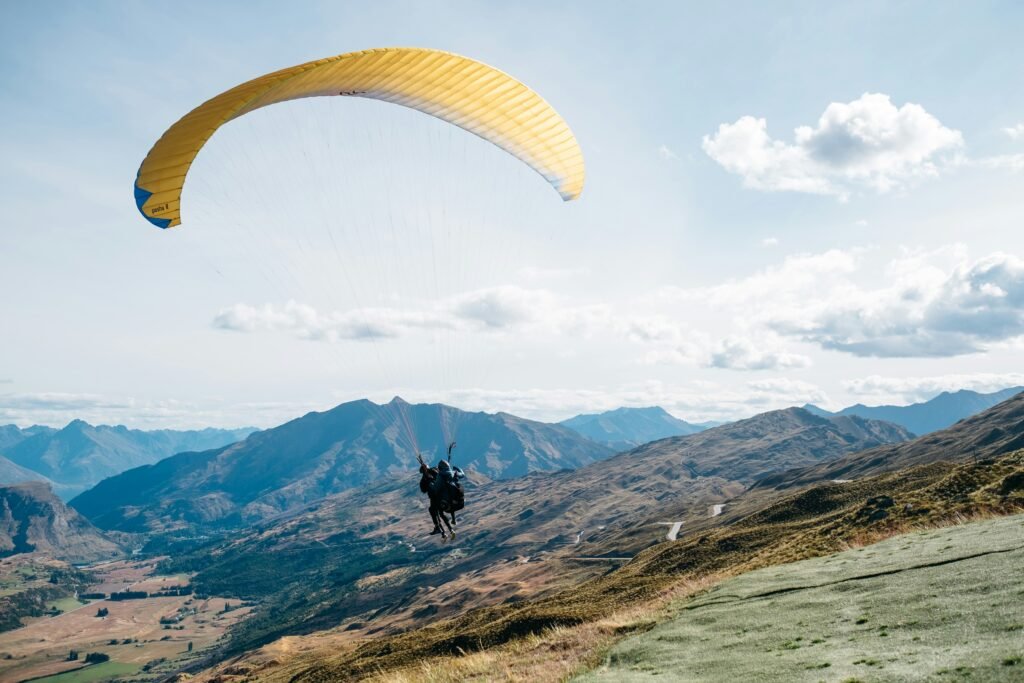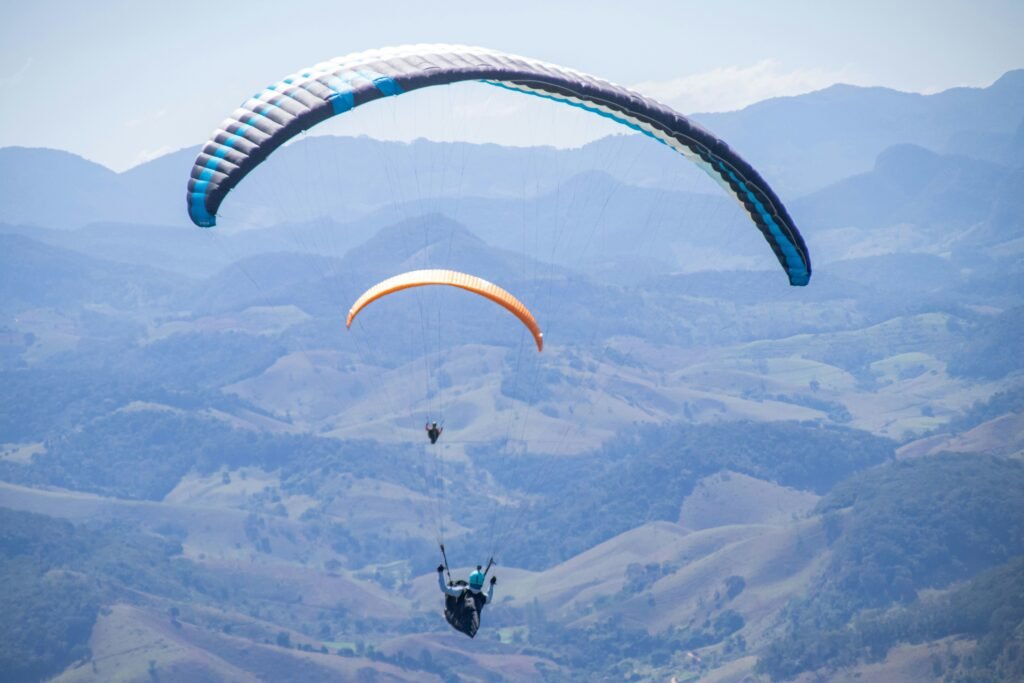Paragliding looks like something only fearless adrenaline junkies could pull off—sprinting off cliffs, catching invisible thermals, steering through the clouds like birds. But then you see people of all ages doing it and think… “Wait, how hard is it really?” Great question—and here’s the surprising answer: Paragliding isn’t as hard as it looks. Especially not when you’re starting with a tandem flight.
Whether you’re curious about trying it once or thinking about learning to fly solo, let’s break down what’s easy, what’s tricky, and what you actually need to get started.
Short Answer
Paragliding isn’t hard—tandem flights require almost no skill, and even solo flying can be learned gradually through training. It’s more about focus and learning than strength or bravery, and most people find it easier than expected. With the right guidance, it’s a smooth and accessible way to experience true flight.
Tip: What is paragliding?
Tandem paragliding: not hard at all
If it’s your first time paragliding, you’ll probably start with a tandem flight—meaning you fly with a professional pilot who does all the work.
In a tandem flight, your job is incredibly simple:
- Jog forward at takeoff
- Sit back and enjoy the ride
- Lift your legs at landing
That’s it.

You don’t steer, you don’t have to understand wind currents, and you don’t need any experience. Tandem flights are designed for beginners, and the pilot handles everything—just like riding in a tandem kayak or on the back of a motorcycle. So in terms of effort? Very easy.
What about fear or nerves?
Many people worry more about their mental state than their physical ability. And yes—it can feel intimidating to launch into the sky.
But here’s the thing: Once you’re in the air, most of the fear disappears. There’s no stomach-drop sensation like on a roller coaster, no chaos or spinning—just smooth, quiet gliding.
And because you’re with a trained pilot, you can fully relax and enjoy the view, knowing someone experienced is in control.
Tip: What is the difference between paragliding and parasailing?
Is it hard to learn to paraglide solo?
Now, if you want to go from passenger to solo pilot, the game changes a bit. You’ll need training, practice, and patience—but it’s still very achievable for most people.
Here’s what you’ll learn in a beginner’s course:
- Ground handling (learning how to control the wing on land)
- Takeoff and landing technique
- Flight theory (wind, weather, thermals, safety)
- Mid-air steering and navigation
- Emergency procedures

You’ll start with small flights from training hills before moving to higher altitudes. Instructors guide you through each step, and nothing happens until you’re ready.
So is it hard? It’s a skill. It takes time. But it’s not out of reach. Think of it like learning to ride a bike or drive a car—awkward at first, but natural with practice.
Tip: What is a tandem jump in skydiving?
Do you need to be strong or super fit?
Not at all. Paragliding is more about balance, coordination, and calm focus than strength or endurance.
Here’s what you do need:
- The ability to jog a few steps for takeoff
- Enough mobility to sit and shift slightly in the harness
- Willingness to follow instructions and stay mentally present
People of all body types and fitness levels paraglide regularly. And if you’re doing a tandem flight, the pilot handles nearly everything physically demanding.

Tip: Paragliding VS skydiving compared
What about steering and control?
When flying solo, you steer the paraglider with brake toggles—handles connected to the back of the wing. Pull the left = turn left, pull the right = turn right, pull both = slow down or flare.
It’s intuitive and doesn’t require force—just gentle, deliberate inputs. The challenge is in reading the air and making smart decisions, not in muscling your way through the sky. With enough flights and instruction, it becomes second nature.
What makes it easier?
Here’s what helps people succeed in paragliding faster:
- Good instruction: A certified school makes all the difference
- Consistent weather: Flying in the right conditions builds confidence
- Staying calm: Panicking creates mistakes—staying relaxed helps everything
- Practice: Like any sport, you improve by doing
You don’t need to be a natural daredevil. Just curious, open, and willing to learn.

Tip: How scary is paragliding?
Final thoughts: challenge or freedom?
So, is paragliding hard? Not really—not if you’re doing it tandem. Even learning to fly solo is more about mental focus and learning than physical difficulty.
It’s a skill, not a superpower. And the reward? One of the most peaceful, empowering experiences you can have—floating quietly above the world, under a wing you know how to control.

